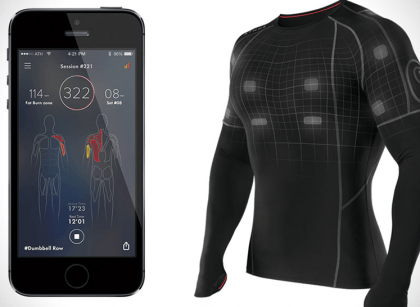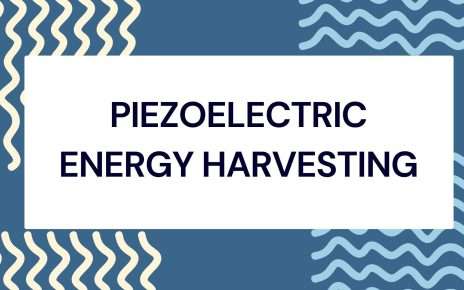How does Piezoelectric Energy Harvesters work?
Piezoelectric energy harvesters can be used to monitor civil and engineering structures, and there are other applications of this energy harvester.
As self-powered structural health monitoring devices, these low frequency energy harvesters also generate enough power to supply other electronic sensors.
Energy output of a piezo energy harvester is determined by several key parameters, including material properties like density and electrical conductivity; structure design properties like dimensions; on-resonance/off-resonance conditions and electrical load characteristics; as well as electrical load characteristics.
Mechanism of Piezoelectric Energy Harvesters
Piezo electricity harvesters produce energy by converting mechanical strain into electrical power via the piezoelectric effect, typically via direct or inverse piezoelectric effects.
They are easily identifiable by an intrinsic electric polarization proportional to mechanical stress (direct piezoelectric effect) and electromechanical coupling between generator and base/host structure (inverse piezoelectric effect).
Their output power depends on both intrinsic and extrinsic factors: intrinsic factors include frequency, mechanical properties and temperature dependence of piezoelectric materials while extrinsic factors include input vibration frequency acceleration as well as base/host structure acceleration plus its amplitude.
For maximum power extraction from a piezoelectric energy harvester, its piezoelectric material and associated power conditioning circuits must be optimized.
Resonator mode should be selected so as to concentrate the energy harvested into one source.
Furthermore, an energy harvester must be designed so as to operate most efficiently for any given environment and load condition.
Numerous strategies have been devised to increase the efficiency of piezoelectric energy harvesters, with frequency-tuning synchronized charge extraction (FTSECE) being one of the most promising techniques.
This method addresses two issues associated with traditional SECE, such as narrow frequency bandwidth in strongly coupled generators and inability to provide maximum power by controlling voltage drop at charge extraction time.
One strategy to increase the efficiency of nonlinear piezoelectric energy harvesters by taking advantage of internal resonance is studying various configurations of piezoelectric beams and plates, such as those with zigzag-shaped configurations [173-175].
Furthermore, researchers have investigated lead magnesium niobate-lead zirconate titanate (PMN-PZT) single crystal harvesters.
For instance, Erturk et al demonstrated how PMN-PZT unimorph cantilevers mounted onto aluminum substrate produced 98 mW per g-2 under base excitation at 90Hz, representing an average power density of 29mW mm-3 [173-175].
Impedance matching is an invaluable technique for increasing the reliability and stability of piezoelectric energy harvesters, not only improving their efficiency but also their reliability and stability.
Many impedance matching techniques have been proposed such as the buck converter topology or discontinuous conduction mode; with the former providing particularly beneficial high frequency power generation.
Buck converter topologies operate up to 20kHz frequencies.
How to Harvest Energy using Piezoelectric Harvester with High Efficiency?
Direct piezoelectric effect energy harvesters employ the direct piezoelectric effect to generate power from mechanical vibrations, making this technology an attractive alternative to batteries as it can be rechargeable, lightweight and compact.
Unfortunately, however, high efficiency harvesters remain difficult to manufacture due to multiple factors, including generation/conversion/voltage regulation/generator efficiency considerations as well as sensitive piezoelectric materials that limit their performance.
Many methods have been developed to increase the efficiency of piezoelectric energy harvesters.
These include lowering fr towards fi, up-converting fi to fr and widening frequency bands; furthermore different configurations of piezoelectric generator can also aid in improving its effectiveness; however these techniques only produce limited improvements.
Integrating a resonator into an energy harvester is one way of significantly increasing its energy harvesting efficiency, improving harmonics generated by piezoelectric generators and thus increasing power output from harvester.
Furthermore, structural configuration of harvesters plays a crucial role in their effectiveness.
Improving harvester efficiency requires matching impedance between harvester and load, which can be accomplished with a DC-DC converter.
Since conventional switching converters fall short in this regard, Lefeuvre et al introduced in 2005 [292] the concept of synchronous electric charge extraction (SECE).
They demonstrated four times greater energy conversion efficiency compared to traditional switch-based DC-DC converters.
MEMS scale energy harvesters offer another means for improving frequency band performance: by adding resonators into the device.
This may require altering its geometry or adding an external resonator; shear mode can also be increased through modifications to structural design.
MEMS scale energy harvesters employing aluminum nitride-PZT generators and metal caps have been demonstrated to generate 136nW at 1g excitation, producing much higher power densities than L-shaped harvesters of similar geometry.












